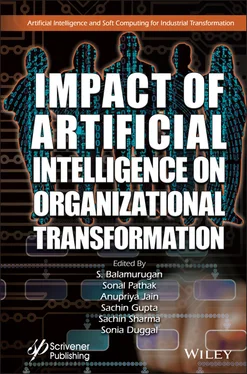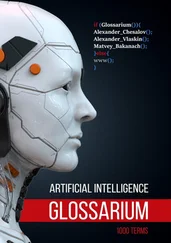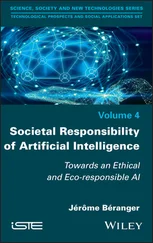In terms of ethics of organization, the point arises in terms of permission in regard to the use of AI in organizations. The question pertains in terms of the use of machines in selecting the future success of any organizations. The issue of the trust rises. It is also difficult to judge the ill effects of AI in terms of errors, as in contrast to a human being, so to use the AI, new methodology ought to be determined for AI.
From an organizational psychology viewpoint, there are lots of issues to be handled before implementing the AI in HR In particular, the loss or the gain has to be carefully calculated before the inclusion. Researchers are expecting that, in the next 10–20 years, around 40%–50% of jobs in Germany could be computerized and round 12 % of all the employees will be substituted by means of machines technology like AI, where selection of the employees would also be greatly affected. It would certainly cause fear of job security result in lack of task interest under performance. It would also result in mental stress and negative fitness and poor outcome for the organizations.
In addition, from an economic point of view, AI calls for a big deal of training and skill updating before using it have to be taken care of, and lots of cost involve in regard to most of the companies having a big population of employee.
It would additionally result in mainstream bias via incorrect training. There are various threats, and significant changes also would not take place and loop holes in the transparency can also become a disadvantage. After all, at some factors, the companies may not recognize how constantly and continuously self-schooling AI makes its selections or recommendations.
3.10.1 Technical Requirements and Acceptance
Currently, there also are various questions in regard to technical competency. The quality and advancement of the machine may give varied results in interpretation of data. For example, the speech conception tool of AI may give wrong result based on the poor quality of the machine or poor algorithm. The technological structure and the essential resource needs also are still unclear at this time.
Applicants face the threat of being misjudged by the use of AI, in which it can bring the image of the company down in the eyes of the other applicants. Furthermore, because of the specialized process of application, the handling of AI can be in particular intricate for managers.
Technology can help in providing effective data in regard to the employees’ performance, but still, it lacks how effectively the Machine Feedback can bring the change in behavior and performance of an employee [11].
Finally, the legal component is likewise imperative. Some of the dark side of AI in HR is as follows:
“There is a central idea in machine learning: the data you use to teach a machine learning algorithm can significantly influence its behavior.”
– Pinar Yardage, Manuel Cambrian, and Iyad Rahwan, MIT
As per the comments from the several HR professionals, HR is still considered as the traditional department and the backbone of any organization; hence, it is necessary to update the work methodology of the HR with the new technology. But in order to gain the initiative, cost is implied and so in the case of AI. As per the report of TATA [12], implementing AI in HR involves two types of cost: fixed cost and variable cost. Fixed cost deals with the machinery purchase, software automation, and the software implementation, while variable cost deals with training of the employees in reference to AI in terms of adoptability and functioning. It may be a huge investment for an organization in comparison to the traditional method of HR. So, most of the organization may retain itself from it.
It is found that danger from the bias of the machine is also possible as in case of Amazon in 2015. It found the favorable sum for the male by their new recruitment engine, at the time of new recruitment of the software developer for the AI team. It showed biases against women. As per the professionals, the AI may found difficulties in understanding the cultural barriers as the terminologies differ between cultures to culture. So, training the employees in right direction becomes the most primary care of using AI in recruitment as how to provide the training to the men who trains machines in order to avoid biases.
The biggest fear among the employee or rather in between the HR mangers is the loss of their job or an impact of the use of software on the importance of their workability. The fears are largely confined to the concern in regard to losing their job and the changes to change of their work through new automation capabilities. AI is causing damage to employees’ experience as an introduction of elimination of human labor, like the use of Uber’s self-driving cars results in the loss to taxi drivers.
The AI like other disruptive change agents on the workplace can create an emotional turmoil, resulting in intensified level of anxiety and fear. As per the Mewald C [13], people tend to fear or do not accept the ill-defined factors or unknown impact creating a negative impact of their jobs. The feeling of being judge by the machines creates a pressure and results in emotional ups and downs in mood based on the uncertainty of the results. As most of the leaders still doubt on the AI as these machines do not have feelings (except automated to display them) and they possess “no moral code” [14].
Another problem is the risk of machine learning repeating the prejudices; another is that AI may fail to imitate human instinct since machines do not understand how human consciousness works [15].
It is believed that uses of AI can also be done in making the fake identity to impress the organization. Like Nvidia , a computer chip maker, is reportedly invested in high involving AI, creating very realistic fake celebrity photos. Researcher has recently reported that machine can help in creating a new real-time photos based on recognized common patterns. This fake photo may hamper the results of the company while selecting and recruiting process and so on.
According to McKinsey [16], comments that most of the most of the HR divisions or vertical departments of today’s era have changed into process-driven “machines” that manage people like assets, instead of treating them as exclusive human beings that encompass personalized attention. HR departments run top-down process systems to employees’ large number of resources, manage payroll, prepare annual appraisals, send instantaneous batches of employees to training, etc. It leaves no room for personalization, flexibility, and creativity.
3.10.7 Having an Audit Trail
The challenges with the machine learning are divided between the learning and outcomes, and all outcomes are based on what the machine has learned and on what basis it has come to its conclusions. The basis and the reasons of working are based on the written down rules and algorithms, which rules the entire human on the same ground. As it hard to decide on “what is always going on under the Bonnet”, so generating an audit troll of how the system makes a decision could be a tough task. The decision and processing based on these machines can raise challenge on selection and recruitment based on AI. The decision taken by the AI can be challenged under the General Data Protection Regulation (GDPR). The leading expert on AI [17] doubts on the success of AI on the understanding of machine in comparison to humans and also doubts on the decision-making power of AI by surpassing the explanatory power of human language and reasons.
Читать дальше












